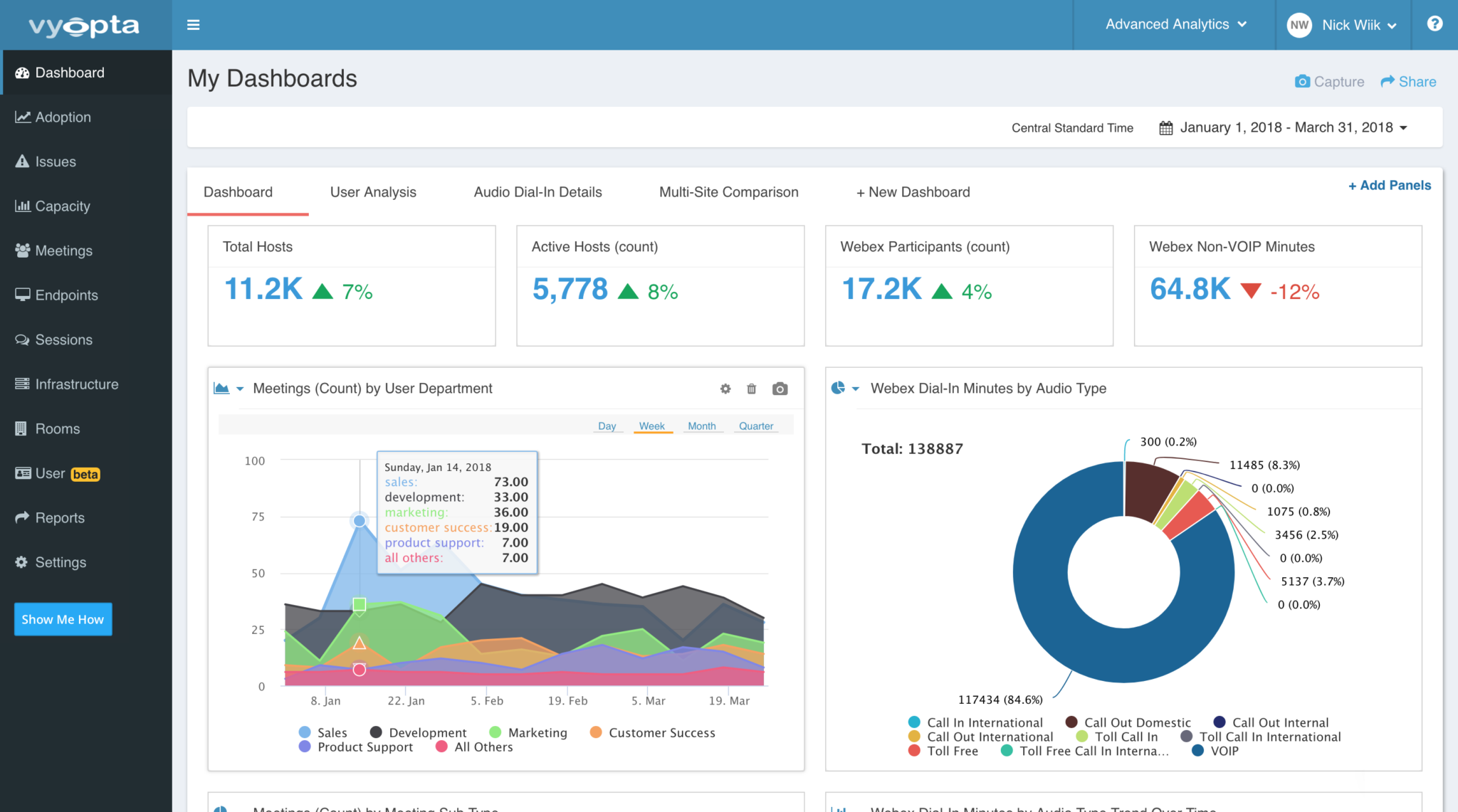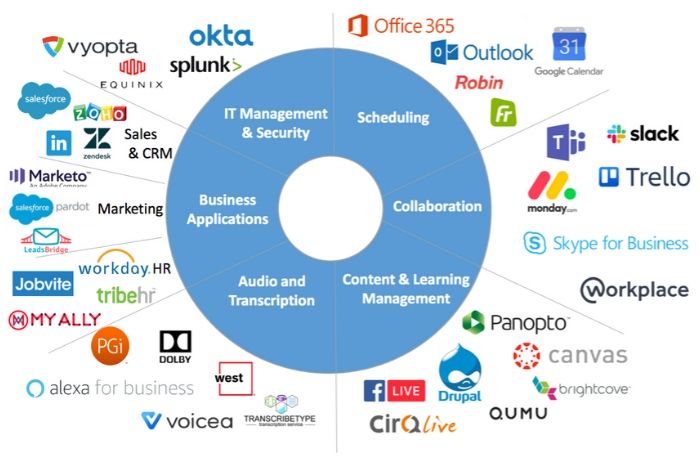The day is coming soon when the corporate office will be most important as a symbolic business center for customers and prospects, instead of serving as the hive of daily work and productivity. One more massive effect of the Covid-19 pandemic is that companies of all sizes are re-examining their need for large offices, with the likelihood that reduced real estate footprints are ahead thanks to the effectiveness of remote workers.
During a recent Vyopta webinar, some leaders in the unified communication space said that smaller and drastically reconfigured offices are on the horizon. That means spaces will be made to create a great impression for outside visitors, known as the “country club effect” according to Ira Weinstein, managing partner at Recon Research.
“We’re hearing some companies talk about taking their office footprint and optimizing it for client meetings. So, sort of the country club effect. This is where we go when we’re bringing in prospects, clients, partners, and externals,” he said. “We want to show them who we are and how we operate. The office will continue. It will bring value. But we’re going to see companies decide how they optimize their use of the office, and how they optimize their real estate.”
The picture of what the future of corporate real estate will look like is still coming into focus and will become clearer by the end of 2021, but there are indications worldwide that a big change is coming.
BisNow recently reported that at least one out of every eight companies that held earnings calls in the second half of 2020 discussed the likelihood of reduced real estate footprints. And an October survey by the U.K.’s Institute of Directors trade organization found that more than half of respondents planned to reduce their real estate holdings.
Reduced real estate requires flexibility
Those decisions on leases or ownership will require significant data on the future of workplace productivity, the nature of remote work and collaboration, and the way that costly meeting and telecommunications rooms will be used for years to come.
Weinstein said the trend of embracing huddle rooms in the workplace prior to the pandemic will have to be altered going forward, with those rooms needing to be more flexible and set up to accommodate an assortment of video and collaboration tools instead of the single-platform setups of the past.
“These rooms are optimized for a specific experience. You walk in there, this is a Microsoft Teams room. This is a Cisco room. That makes it easy to install and easy to use,” he said. “My question is, are we going to still focus on the smaller rooms? And these are not locked down experiences, or will it open up when people get back to the office, with multi-platform, multi-room setups of different sizes?”
Nick Wiik, a product manager for Vyoptpa, said companies looking to reduce real estate square footage will need to build in flexibility when it comes to how in-office and remote workers do their jobs. In the post-Covid world that will mean IT and UC teams allowing a wider variety of collaboration and video tools to be used by the workforce that used the early months of the pandemic to find what solutions they liked best.
With Vyopta’s ability to provide comprehensive data in multivendor collaboration environments – specifically around call quality and usage patters – customers will have the best possible information about how to use their real estate efficiently for years to come.
“We can go in this multivendor environment and help them to quantify that use case. Prior to the pandemic the thinking was ‘Let’s make sure that we’re using our real estate, that these rooms are full.’ Now we have this use case that nobody saw coming, which is we still want to make sure that the square footage is used, but we don’t want too many people in these rooms,” he said.
“How can we use the UC technology to understand that from a safety perspective? And with all of these changes on who’s remote and who’s not, how do we understand what people are doing in the room?”
Wiik said that companies shouldn’t treat the possibility of future reduced footprints as found money. Because everyone seems to be on the path to revamping how they use their offices, it will be a competitive necessity to shrink and adapt offices for the future.
“If you are in rooms in your office experience, if you don’t invest in that flexibility with everyone expecting it now that they’re coming from home, you’re going to really decrease the ROI of that real estate that you’ve invested in,” he said.
“If you’re looking for opening a new office… you’re going to base that data off of a really suboptimal experience, because if you don’t allow for that flexibility and being able to (bring your own) device in your physical spaces, it’s going to really hamper the user experience. Now with the majority of people being remote, we need to think about what’s in the spaces. And you do what you already have. Do you need some sort of interop solution to get to all of those users? Is it a matter of retrofitting what you have? A lot of those questions, if you’re not already scrambling to invest and make those decisions, that day is coming.”
This webinar gives the latest insights on the changes coming to the UC space. Watch it all to learn more.
Chad Swiatecki is a business writer and journalist whose work has appeared in Rolling Stone, Billboard, New York Daily News, Austin Business Journal, Austin American-Statesman and many other print and online publications. He lives in Austin, Texas and is a graduate of Michigan State University. Find him online on LinkedIn.








